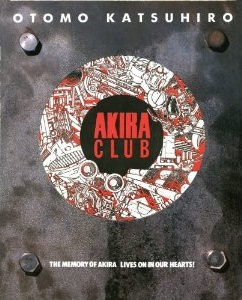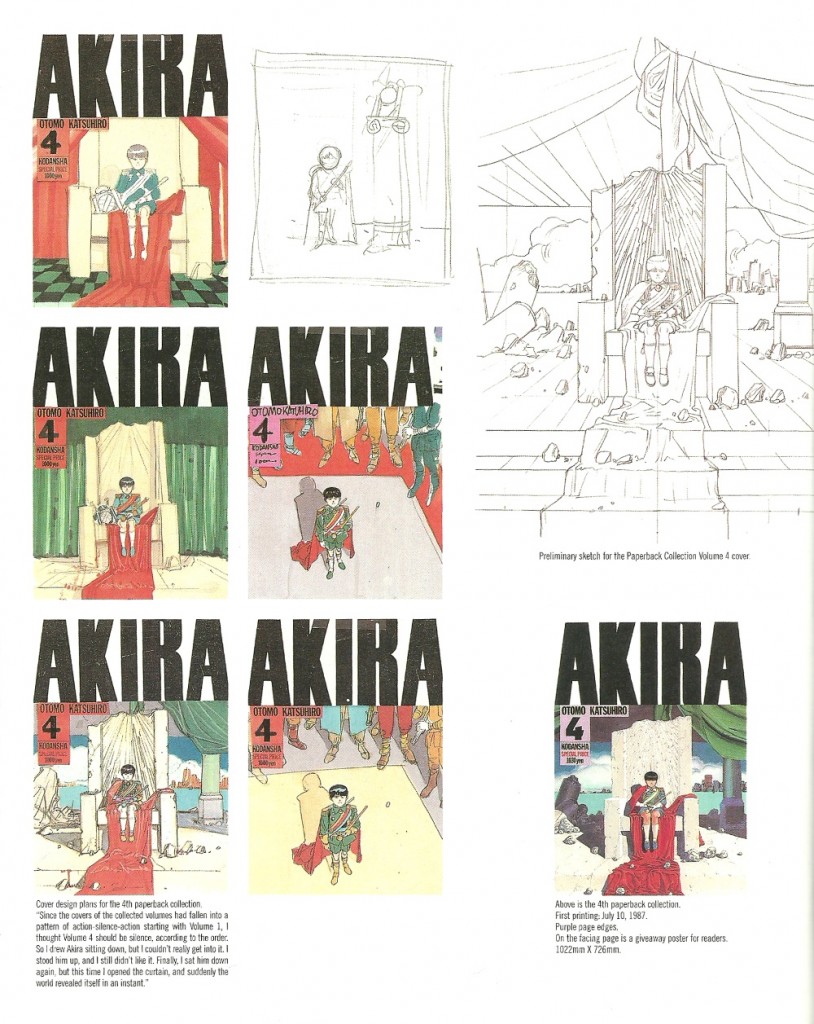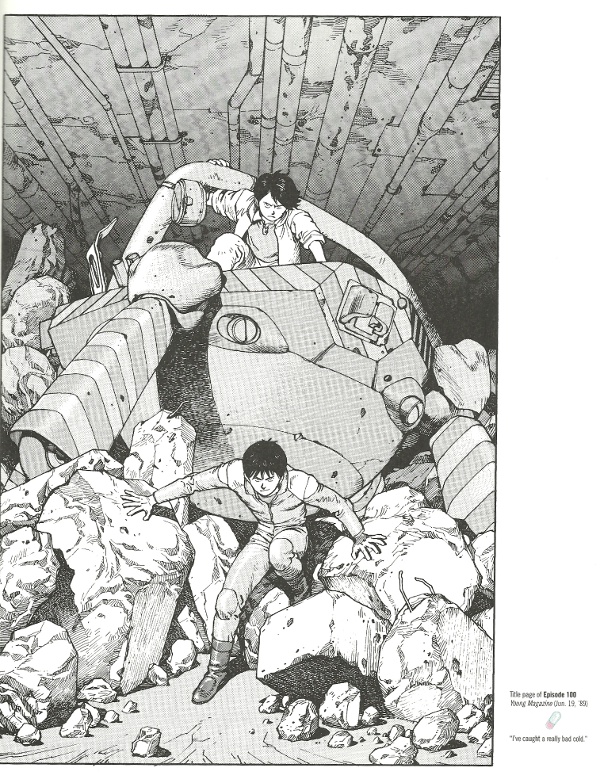Akira Club Art Book Review

While browsing around Amazon the other day, I saw a recommendation for Akira Club, which I hadn’t heard of before. Since I like the Akira film and loved the comic, though, I figured I’d check it out.
The book collects Otomo Katsuhiro’s preliminary sketches, promotional art, title pages, and other odds and ends from the Akira comic, along with a couple things for the film adaptation, with many short comments from Otomo. Kodansha originally plublished this in Japan in 1995, and Dark Horse released it in the United States in 2007.
Akira Club is a well-produced book. It’s hardcover, with bright, raised art on the cover which stands out from the dull, metallic background of the rest of the cover design. I noticed that Dark Horse kept Otomo’s name in Japanese order throughout, which not many Amercian publishers do but I appreciate it. I am a bit curious why this is, though. They used Western name order for Akira and Domu, which also had the same editor (Chris Warner). Did Otomo request it here? Or maybe it was more of an aesthetic decision for the art book?
Well, on to the content, which is divided into four sections. The first contains cover illustrations, for Young Magazine (which serialised Akira), the collected editions, and a couple other things, alongside Otomo’s drafts and revisions and some short comments by Otomo. I found this section the most interesting, because it includes some art I haven’t seen before, like the cover for the laserdisc edition of the anime adaptation, and the initial drafts give a little insight into how much thought Otomo put into details like layout and general colour schemes. It also has the best comments. Nothing mind-blowing, of course, but interesting. On the cover for the first paperback collection, for instance, he says, “I wanted the page count, the contents, the paintings, everything about the collected volumes to create a deep, full, American comic-style world. In order to make sure this illustration was also really rich, I was consciously really heavy on the paint. It was the first time in my life I’d ever painted anything so thickly.”
The second section contains title pages for each chapter of the serialised version. These were omitted from the paperback collections, so it’s nice to have them here. Most are relatively simple illustrations of characters or landscapes, the sort of thing you might see on a movie poster. There are also a couple pages on the development of the Akira logo, which should interest typography and design nerds. The comments come from the original publication, the kind of short note put into the magazine’s margins, so they’re mostly pretty mundane. For example, “Crabs are in season again, so I’m quite happy,” or “Recently, I’ve been totally obsessed with mildly heated shochu.” I guess it’s better to have them than not, for the sake of completeness, but they don’t add much of value.
Section three includes a bunch of promotional knick-knacks, basically. Things like posters, t-shirt designs, leaflets, etc. I suppose it’s nice to have for, again, the sake of completeness, or at least complete as of 1995, but most are just reworked versions of art already included elsewhere in the book. Other things, like a kiosk covered in Akira-related goods made for the back of one of the paperback collections, are a little cool, but nothing real special. This part includes only a few Otomo comments.
The last section, ‘Unpublished Works’, contains just that - layouts and artwork that Otomo drew but ultimately rejected or heavily revised. This section should interest those interested in the thought process that goes into deciding things like panel layout, or how art was reworked for international editions. It also includes some good commentary. I should also mention that while the rest of the book is printed on high-quality paper, this section consists of a cardboard-like material. That’s fine, though, considering the rather rough artwork in this part.
The book ends with a few short little features. First, an Akira chronology, which mostly presents publication dates. Second, a couple pages collecting short questions and answers asked by the Young Magazine editorial staff to Otomo and printed in the magazine’s margins. Most are pretty mundane, though a few made me laugh, and a few made me wonder if Otomo has, or had, a drinking problem. For example, the question for 7 January 1985, “Q: Your favorite traditional New Year’s food? A: I’m always so drunk around New Year that food doesn’t leave much of an impression.” The last page has a short message from Otomo for Akira Club, which includes the observation:
Several years ago - I forget how to describe my feelings exactly - I found this expression scrawled in a corner of my drawing board:
“If you eat, whether it makes you laugh or cry, it all comes out shit.” I apologize to those who were eating.
Thanks for closing on that note, Otomo.
So, is Akira Club worth a purchase? I would say yes, if you’re a big fan of the comic. If you’re only a casual fan, or have only seen the anime, I don’t think the material quite justifies the $20+, but it may still be worth having if you can get it for a better price.

